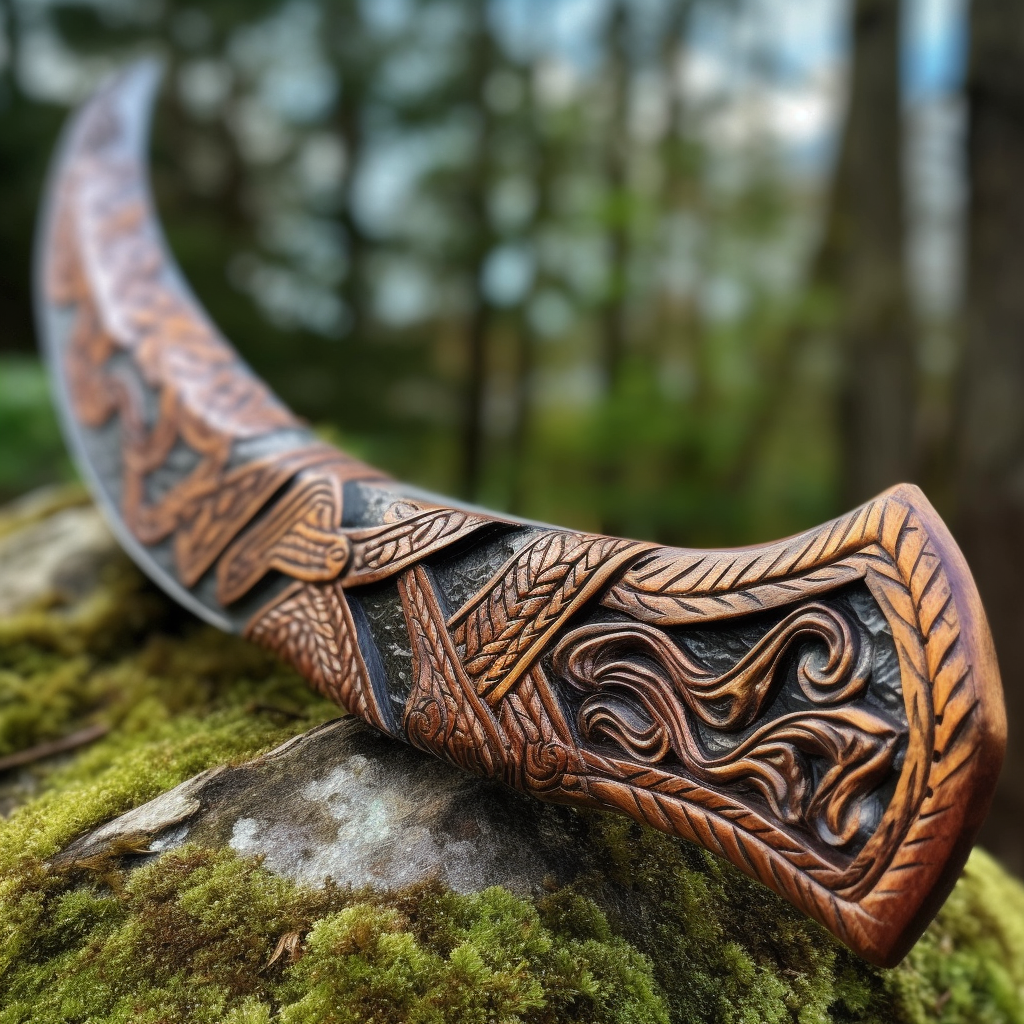How was the Viking bow made and what is its symbolism ?

To fight their enemies, Viking warriors did not only use the axe. They also wielded with perfect dexterity weapons such as double-edged flat swords , the spear, and of course the bow. And it is precisely this last weapon that we want to talk about here. Even kings, Magnus Berfott in this case, used the bow. What do these weapons look like? How were they made? What did these weapons represent symbolically?
The Viking bow in combat
You have probably seen in the Norse sagas , how the Vikings fought against their enemies. Axes were effective, that's for sure, but they weren't the only weapons used. In land battles or in attacks launched during maritime expeditions , arrows were also very often used since unchecked, they could hit the enemy from afar unlike the axe.

@thefaunawitch
Even if some threw their axes, the weight of these weapons is such that they could not fly at the same speed as the arrows. Identification of Viking bows is further aided by the oval cross-section and its points which are relatively flared. Furthermore, it should be noted that the large Viking bow was not part of the hunting weapons. It is a weapon of war, in the truest sense of the word. Its first target is human flesh, that which is full of life.
Symbolically, the Viking bow is the symbol of the enemy , courage and defense. Anyone who owns a bow and knows how to use it, thereby expresses that he keeps an eye on his enemies and will neutralize them before they reach him. We can therefore tattoo this symbol on the skin, for example, to express the same message when we know we are in an unsafe place.
Viking bow making
The Viking bow stands out from other traditional types of medieval bows by their particular shape. Indeed, archaeological excavations, in particular those of the site of Hedeby, located at the level of the border between Denmark and present-day Germany, have led to the discovery of several Viking bows. As a reminder, this site was a Viking trading center that served from the 8th to the 11th century.
Other bows have been found at the Ballinderry site in Ireland. What interests us between the results of these two excavations is that despite the distance which separates the two sites on the one hand, and the time which separates the dating of the two arcs on the other hand, these two types arcs are absolutely identical.
Viking bows are long, D-sectioned staffs with the tip modified to create a deflexed bend. Just before the start of the bend, the notch is cut. And these weapons deliver various powers depending on their manufacture and especially the type of wood used in their manufacture. Viking bows are often made from elm or yew wood. Thus, the power of the bow of Hedeby for example is between 70 and 90 pounds, or 40.82 kg.
To fight their enemies, Viking warriors did not only use the axe. They also wielded with perfect dexterity weapons such as double-edged flat swords , the spear, and of course the bow. And it is precisely this last weapon that we want to talk about here. Even kings, Magnus Berfott in this case, used the bow. What do these weapons look like? How were they made? What did these weapons represent symbolically?
The Viking bow in combat
You have probably seen in the Norse sagas , how the Vikings fought against their enemies. Axes were effective, that's for sure, but they weren't the only weapons used. In land battles or in attacks launched during maritime expeditions , arrows were also very often used since unchecked, they could hit the enemy from afar unlike the axe.

@thefaunawitch
Even if some threw their axes, the weight of these weapons is such that they could not fly at the same speed as the arrows. Identification of Viking bows is further aided by the oval cross-section and its points which are relatively flared. Furthermore, it should be noted that the large Viking bow was not part of the hunting weapons. It is a weapon of war, in the truest sense of the word. Its first target is human flesh, that which is full of life.
Symbolically, the Viking bow is the symbol of the enemy , courage and defense. Anyone who owns a bow and knows how to use it, thereby expresses that he keeps an eye on his enemies and will neutralize them before they reach him. We can therefore tattoo this symbol on the skin, for example, to express the same message when we know we are in an unsafe place.
Viking bow making
The Viking bow stands out from other traditional types of medieval bows by their particular shape. Indeed, archaeological excavations, in particular those of the site of Hedeby, located at the level of the border between Denmark and present-day Germany, have led to the discovery of several Viking bows. As a reminder, this site was a Viking trading center that served from the 8th to the 11th century.
Other bows have been found at the Ballinderry site in Ireland. What interests us between the results of these two excavations is that despite the distance which separates the two sites on the one hand, and the time which separates the dating of the two arcs on the other hand, these two types arcs are absolutely identical.
Viking bows are long, D-sectioned staffs with the tip modified to create a deflexed bend. Just before the start of the bend, the notch is cut. And these weapons deliver various powers depending on their manufacture and especially the type of wood used in their manufacture. Viking bows are often made from elm or yew wood. Thus, the power of the bow of Hedeby for example is between 70 and 90 pounds, or 40.82 kg.



























